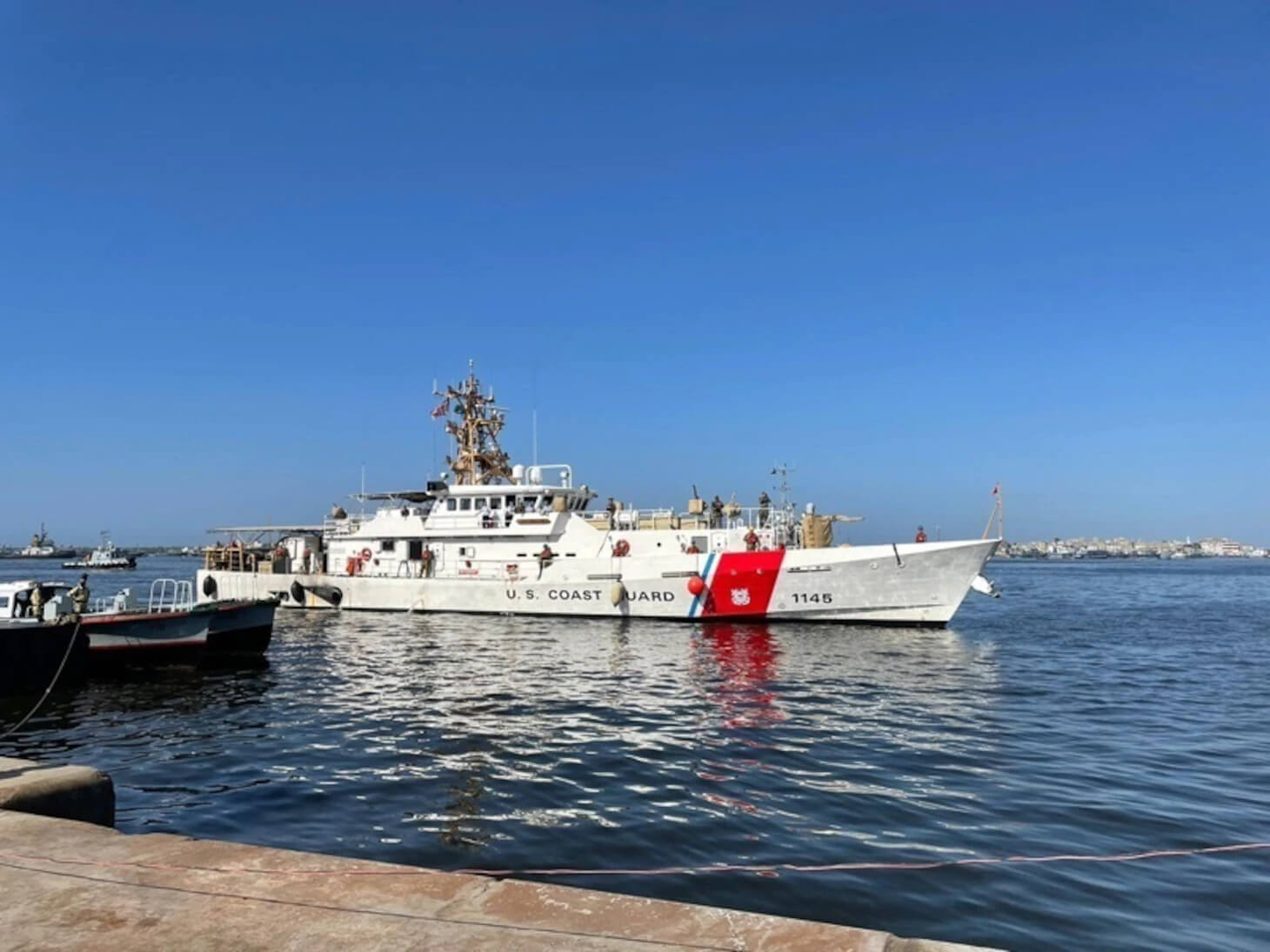In another sign of the growing strategic convergence between the United States (US) and Pakistan, two US coast guard ships arrived in Karachi for a “scheduled port call” from 6-9 October as a part of a joint exercise that sought to enhance interoperability and facilitate technical exchanges between the US 5th Fleet and the Pakistan Navy.
According to a press release by the US Naval Forces Central Command Public Affairs, the exercise was part of a wider goal of ensuring “maritime security and stability across the Middle East.” To this end, the American Coast Guardsmen also met with Pakistani naval officers to discuss security concerns.
US Coast Guard Captain Eric Helgen said that the exercise helped expand their “relationship in a very dynamic region” and that it would facilitate “staff exchanges and joint exercises to enhance coordination and cooperation.” He also celebrated the “strong and enduring” partnership between the two nations, which have conducted several joint exercises over the years.
Two U.S. Coast Guard ships visited Karachi, Pakistan, for a scheduled port call Oct. 6-9. USCGC Charles Moulthrope & USCGC Emlen Tunnell visited as part of an ongoing series of joint exercises & technical exchanges between 🇺🇸&🇵🇰.
— U.S. Naval Forces Central Command/U.S. 5th Fleet (@US5thFleet) October 9, 2022
Read More ⬇️https://t.co/ZsY9mLnyGh pic.twitter.com/vesWTLezfQ
The press release lauded Pakistan as a member of the Combined Maritime Force, a 34-member maritime partnership that operates in the Red Sea, Gulf of Aden, Northern Arabian Sea, Gulf of Oman, Arabian Gulf, and the Indian Ocean.
The US Navy’s Fifth Fleet is a critical pillar in the US’ presence in the Middle East. It operates in 2.5 million square miles of water covering 21 nations. It also has three strategic choke points in the Suez Canal, the Strait of Hormuz, and the Strait of Bab el Mandeb.
These latest developments add to India’s concern about the US’ growing military partnership with Pakistan.
Last month, during a conversation with his American counterpart Lloyd Austin, Indian Defence Minister Rajnath Singh raised “concern” about the US’ $450 million F-16 deal with Pakistan, under which Islamabad will receive engineering, technical, and logistical support for its fleet of the American-made fighter jets.
However, the US maintains that Washington’s decision was necessary because the equipment used by Islamabad is 40 years old.
The US’ Defence Security Cooperation Agency has underscored that the deal does “not include any new capabilities, weapons, or munitions” and that it would not “alter the basic military balance in the region.”
US Assistant Secretary of State Donald Lu, too, has said the deal is a “sale” and “not assistance.”
Likewise, US State Department spokesperson Ned Price has assured that the US is
merely honouring its pledge to provide “life cycle maintenance and sustainment packages” for all defence equipment sales.
“The Quaid-e-Azam Memorial Dak Bungalow symbolizes the cultural and historical richness of Pakistan and was famously visited by Jinnah in 1944. I’m honored to visit during my first trip to AJK.” -DB #AmbBlome #PakUSAt75 1/3 pic.twitter.com/KKIEJ17sUo
— U.S. Embassy Islamabad (@usembislamabad) October 2, 2022
However, India is unconvinced that Pakistan will use the fighter jets for counterterrorism as the US claims, with Indian External Affairs Minister S. Jaishankar saying that Washington is “not fooling anybody,” given the capacity and the use of the aircraft against India in the past.
Apart from the F-16 deal, the US also attracted India’s ire after its ambassador to Pakistan, Donald Blome, visited Pakistan-Occupied Kashmir and called the region “Azad Jammu and Kashmir,” openly rejecting the terminology India uses to highlight Pakistan’s illegal occupation of the region.

